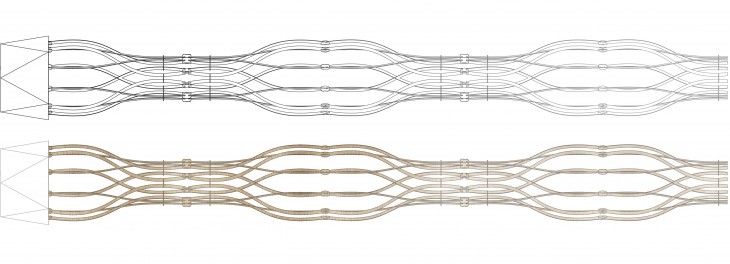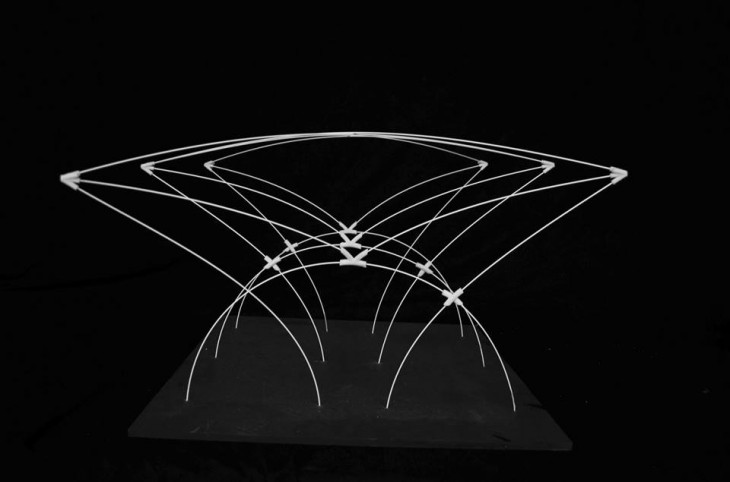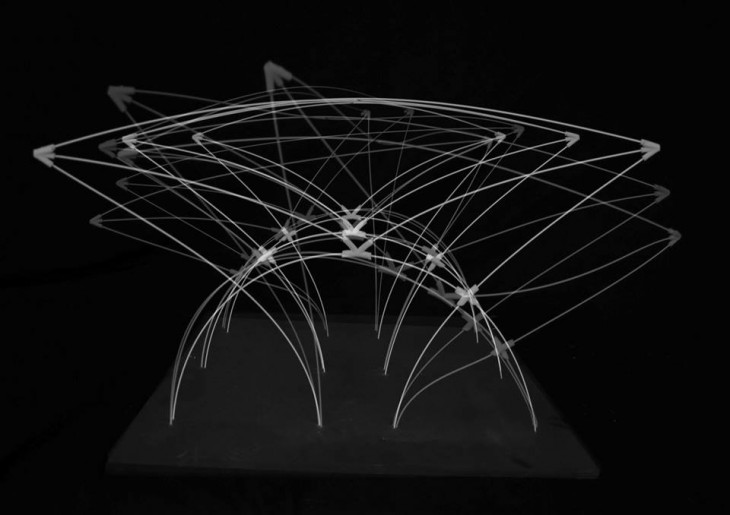We designed our tile using hexagons that create undulations on the surface such that they form concave-convex surfaces. The forms seem to interchange, creating an illusion. When the liquid is poured on the tile it flows to the valleys and dips which contains it and creates an opposite effect as the tile itself does before it flows to the adjacent tiles. Looking at it, is it concave? or concave? Read More
Category Archives: Wen Shan Foo
Red Boots
“Kinetic Red Boots”
Group 7
The main idea of our design was to create a static structure that could be converted into a kinetic structure exploiting the properties of the material tension and bending. Based on a single figure and repeating it twice, the goal was to create a sense of depth from the horizontal. We made the design of three different nodes or joints that would allow us our idealized objectives:
1) The cross- its main feature would be join two elements in counterclockwise and prevent the buckling of these elements due to bending that would occur by elements located in the top.
2 ) The inverted K- the most important and central Union of the structure, which would be in contact with most of the bars , enabling the desired deflection at the main arch and in turn become a free joint along arc , allowing the structure due to the tension of one side to the other , moving from left to right , opposite directions.
3) The sucker – Due of its four arms this binding would give rigidity to the structure and in turn the union of the three individual structures, holding the rods and causing the tension and compression in these once started moving in both directions .
2.0 to 4.6
 The laser cutting exercise was focused on designing a vertical structure generated by a system of different components with the use of 4 mm plywood boards (840×300 mm) and to obtain the highest structure possible.
The laser cutting exercise was focused on designing a vertical structure generated by a system of different components with the use of 4 mm plywood boards (840×300 mm) and to obtain the highest structure possible.
The first experiments started trying to make use of a single repeating element that could generate a stable structure. While this approach was rich in stability and had the advantage of very little material waste, it had the disadvantage of not being able to reach impressive heights. Read More




